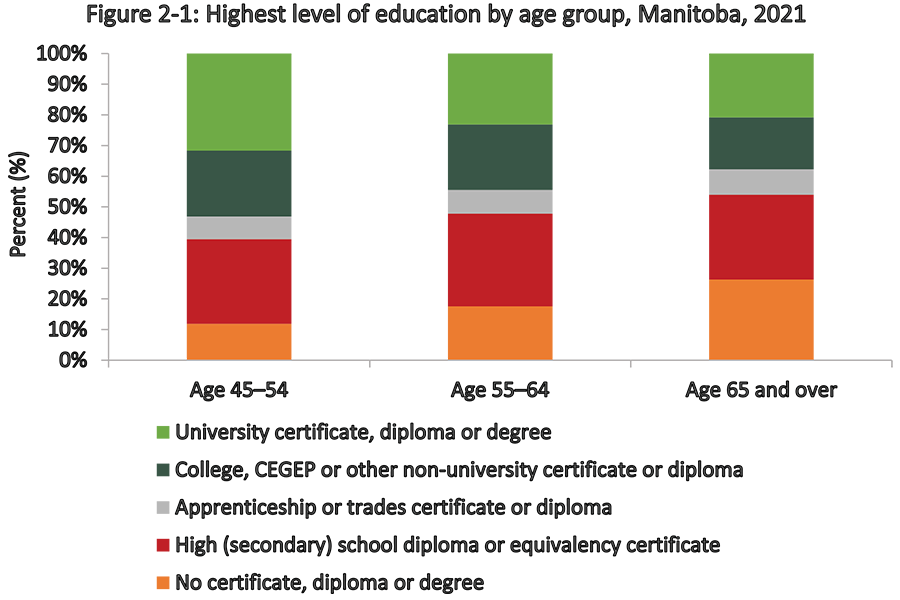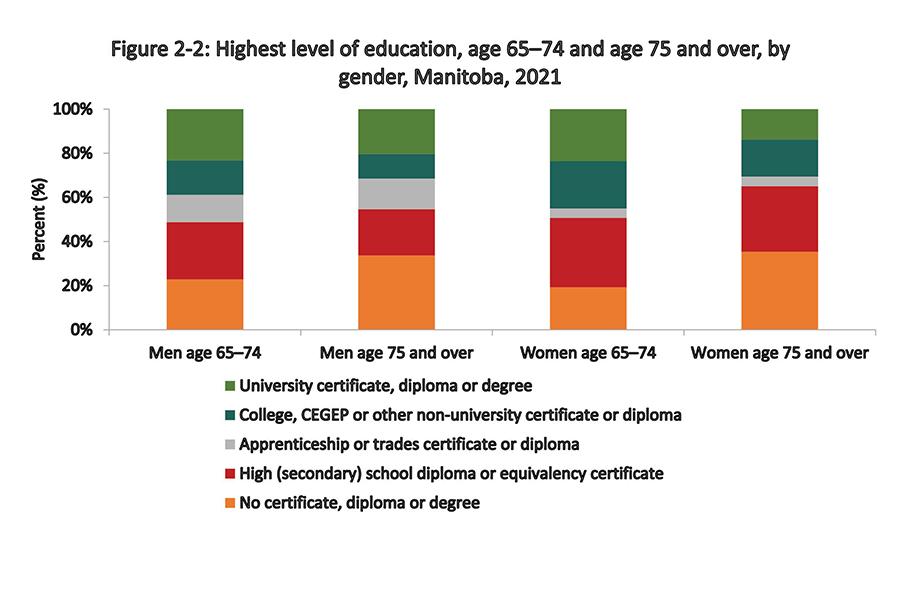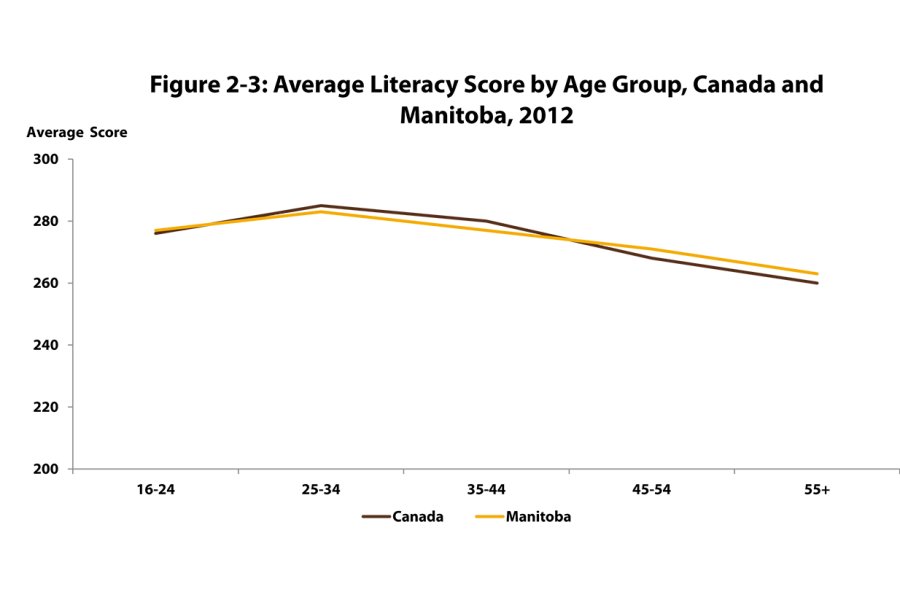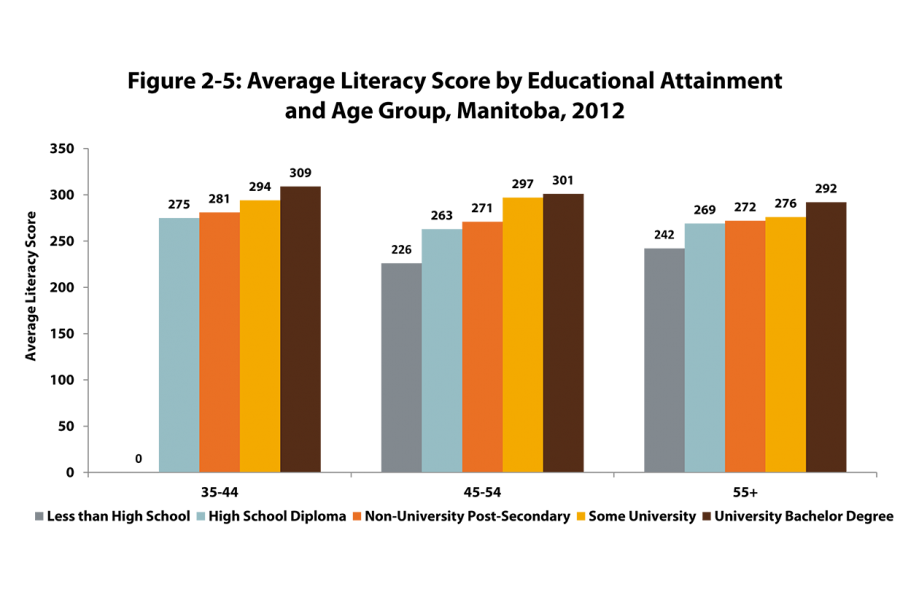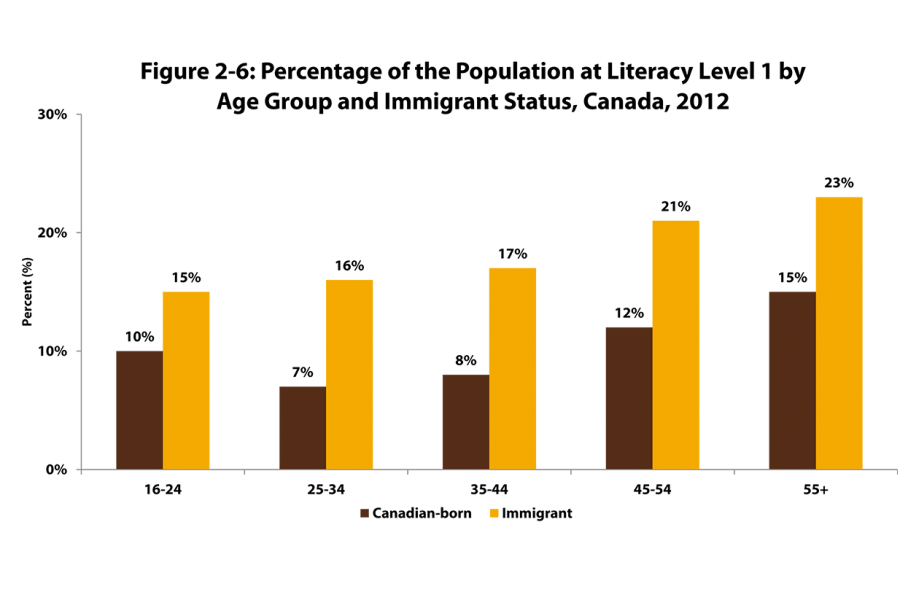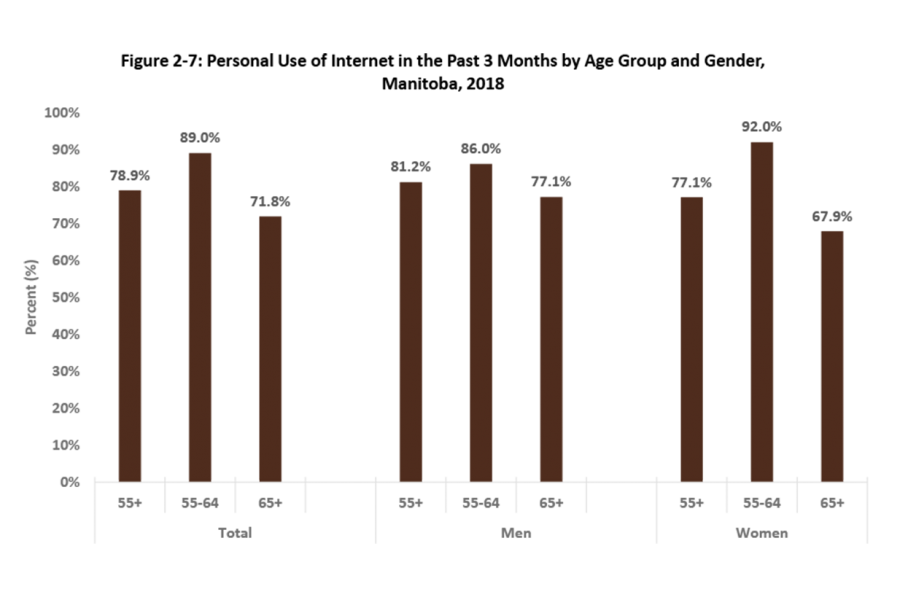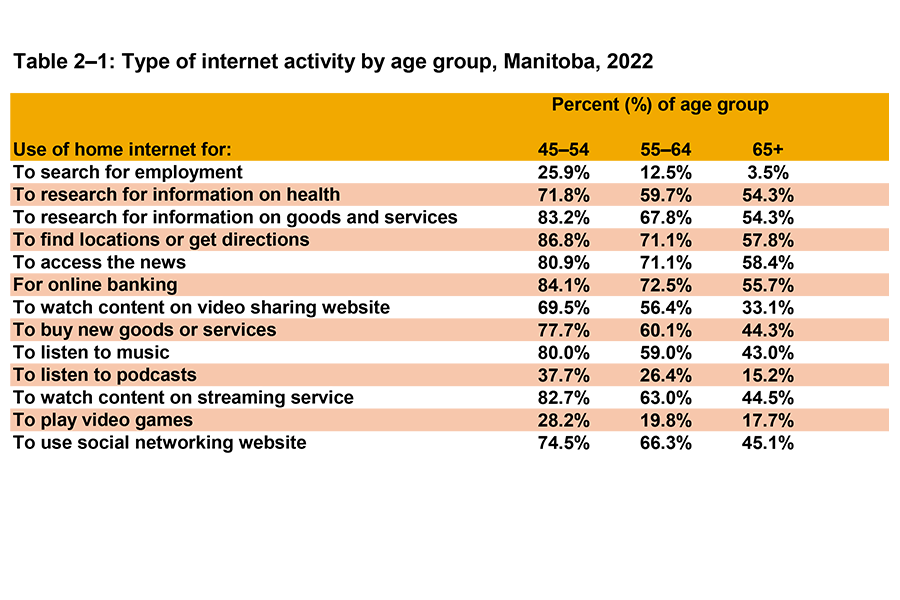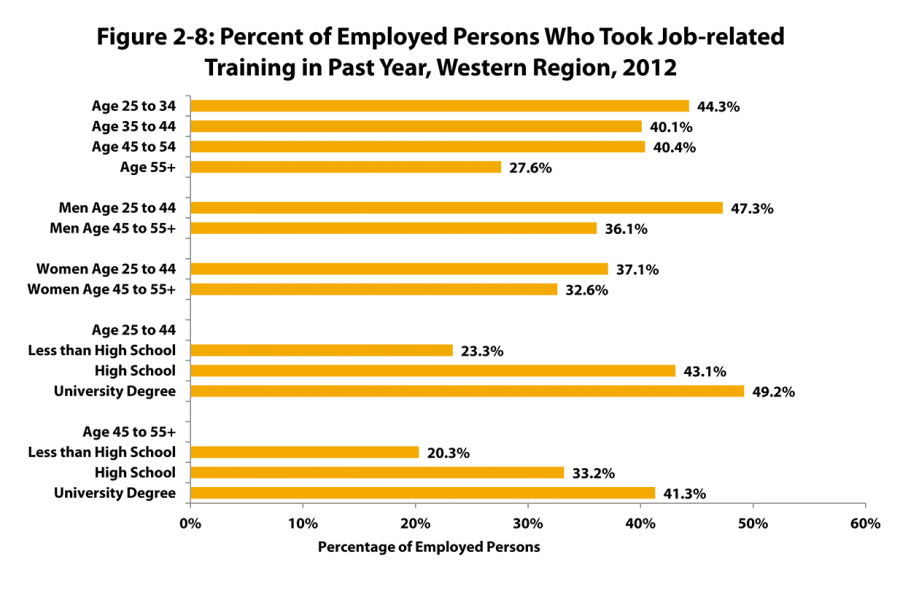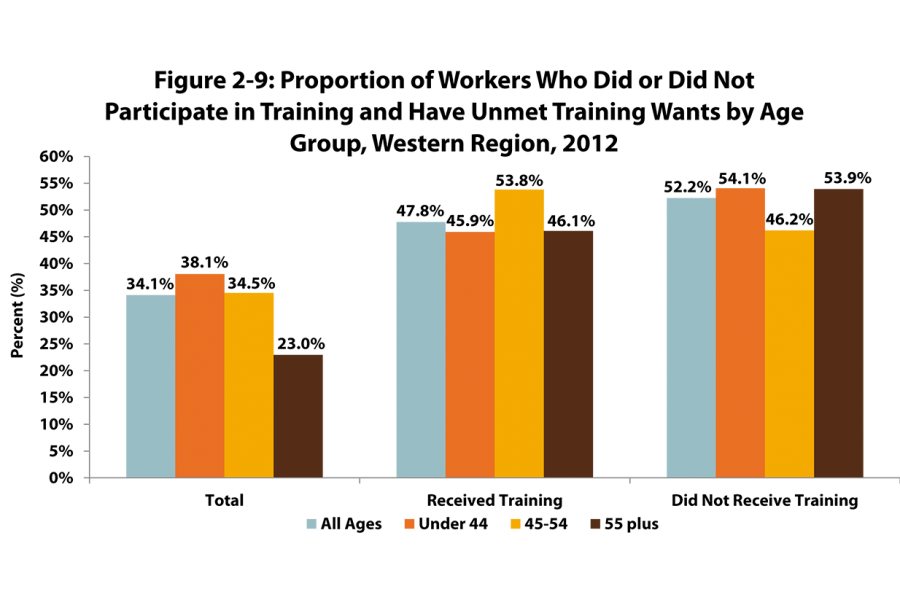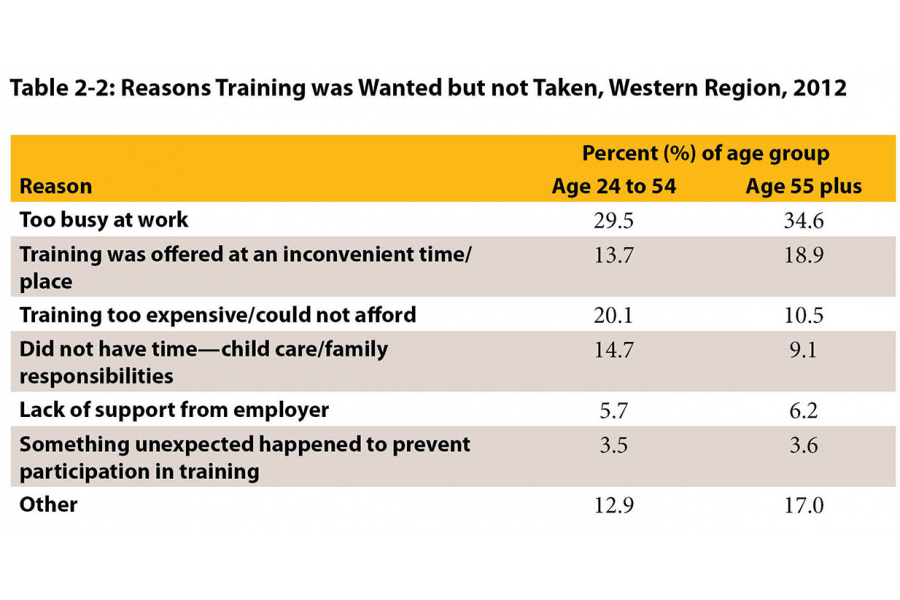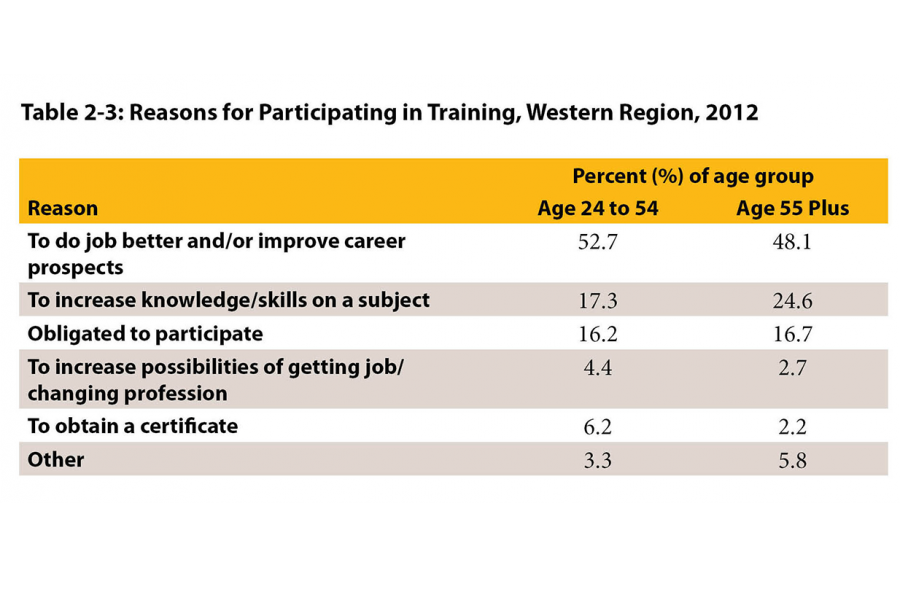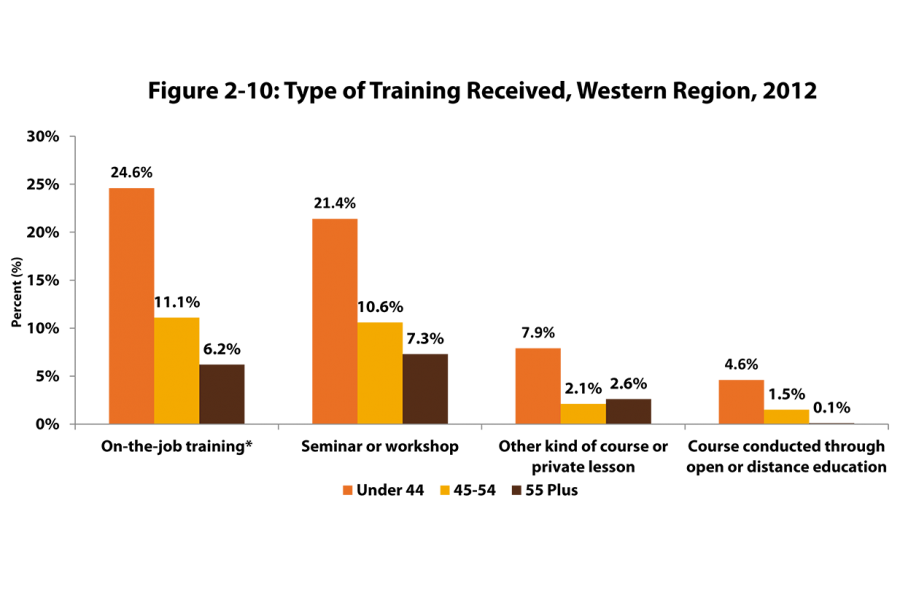Lifelong learning
Many of the next generation of older adults will have more formal education than today’s older adults. This section starts by discussing the educational profile of today’s older adults. This is followed by a discussion of literacy levels and job-related training, all of which may have an impact on older adults' participation in the workforce.
On this page
Available in alternate formats upon request.
Educational attainment
Download file
Highest level education (PowerPoint) | Highest level education (Excel)
Note: This data source is based on the 2021 Census long-form questionnaire. A sample of approximately 25% of Canadian private households in occupied private dwellings received the questionnaire. People, who were not occupying the households for various reasons, were not included.
Source: Statistics Canada. Table 98-10-0590-01 Labour force status by occupation (training, education, experience and responsibility category - TEER), mobility status 5 years ago, highest level of education, age and gender: Canada, provinces and territories and census divisions. Released November 15, 2023. DOI: https://doi.org/10.25318/9810059001-eng
Download file
Highest level of education 65+ (PowerPoint) | Highest level of education 65+ (Excel)
Note: This data source is based on the 2021 Census long-form questionnaire. A sample of approximately 25% of Canadian private households in occupied private dwellings received the questionnaire. People, who were not occupying the households for various reasons, were not included.
Source: Statistics Canada. Table 98-10-0590-01 Labour force status by occupation (training, education, experience and responsibility category - TEER), mobility status 5 years ago, highest level of education, age and gender: Canada, provinces and territories and census divisions. Released November 15, 2023
DOI: https://doi.org/10.25318/9810059001-eng
Literacy
Download file
Literacy score (PowerPoint) | Literacy score (Excel)
Note: Higher literacy scores equal higher levels of literacy
Source: Organization for Economic Cooperation and Development (OECD), Program for the International Assessment of Adult Competencies (PIAAC), 2012 Literacy Assessment.
Download file
Literacy level 1 or level 2 (PowerPoint) | Literacy level 1 or level 2 (Excel)
Source: Organization for Economic Cooperation and Development (OECD), Program for the International Assessment of Adult Competencies (PIAAC), 2012 Problem solving Assessment.
NOTE: Level 1 indicates a lower level of ability in literacy, numeracy and problem solving in technology-rich environments than level 2.
For more detailed information about proficiency levels see: OECD (2016), The survey of adult skills: Reader’s companion, Second Edition, OECD Skills Studies, OECD Publishing, Paris.
Download file
Literacy score by educational attainment (PowerPoint) | Literacy score by educational attainment (Excel)
Source: Organization for Economic Cooperation and Development (OECD), Program for the International Assessment of Adult Competencies (PIAAC), 2012 Literacy Assessment.
Download file
Literacy level 1 immigrants and Canadian born (PowerPoint) | Literacy level 1 immigrants and Canadian born (Excel)
Source: Organization for Economic Cooperation and Development (OECD), Program for the International Assessment of Adult Competencies (PIAAC), 2012 Literacy Assessment.
NOTE: Level 1 indicates a lower level of ability in literacy, numeracy and problem solving in technology-rich environments than level 2.
For more detailed information about proficiency levels see: OECD (2016), The survey of adult skills: Reader’s companion, Second Edition, OECD Skills Studies, OECD Publishing, Paris.
Use of technology
Download file
Internet use (PowerPoint) | Internet use (Excel)
Source: Statistics Canada. 2018. Canadian Internet Use Survey, Public Use Microdata File.
Download file
Internet activity (PowerPoint)
Source: Statistics Canada. 2022. Canadian Internet Use Survey, Public Use Microdata File.

